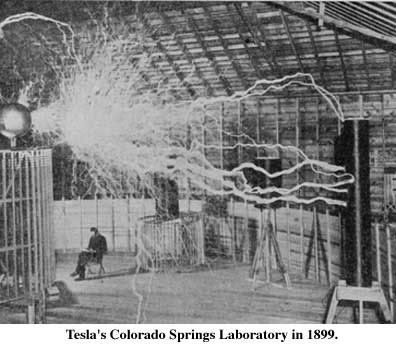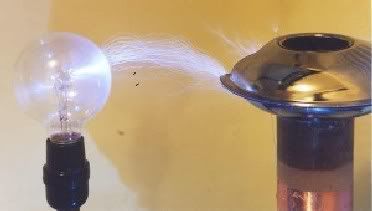Hello to all! For a long period of time i was studying Tesla's patents, but there was a turning-point, induced me to start practics. That turning-point were your videos and books, Peter. So i want to talk about radiant energy.
I've learned in depth the book "Secrets of cold electricity", also watched "Tesla's longitudinal electricity" video. So i and group of engineers decided to replicate Tesla's radiant energy system. There are three types of electricity by Tesla: DC, AC and radiant current. Radiant current is produced by tiny particles of aether.
In his experiments Tesla used spark gaps with unidirectional impulses to release radiant energy. Classical physics tell us the spark gap is a universal resonance tuner for any circuit, cause plasma discharge generates several frequencies. But this is what classics tell us. We can assume that Tesla used spark gap, cause he haven't modern semiconductors. But also we can assume that spark gap have some unique characteristics, that can't be obtained with semiconductors.
1. Is it possible to use mosfets instead of spark gaps?
2. Why did Eric Dollard caught radiant flow only from the bulb, but not directly from the transmitter's secondary? In the book of Gerry Vassilatos Tesla said that radiant stream went from the secondary of his discharge system. "Furthermore, whenever a metal point was connected to the upper terminal of one of his Transformers, the stream became more directive. It behaved just like a stream of water in a pipe."
3. What resonant frequency has been chosen in Eric's transmitter? Eric Dollard said that every oscillating system has two resonant frequencies: one for transversal waves and one for longitudinal waves. Doctor Meyl calculated that the speed of propagation of longitudinal wave is 1.5 times greater than the speed of light. So should we design secondary with the rule of 1/4 of longitudinal wave length, or electromagnetic wave?
4. More resistance of secondary - more radiant energy from it, is it right? What material should we use to wind secondary coil with vaximum resistance?
I've learned in depth the book "Secrets of cold electricity", also watched "Tesla's longitudinal electricity" video. So i and group of engineers decided to replicate Tesla's radiant energy system. There are three types of electricity by Tesla: DC, AC and radiant current. Radiant current is produced by tiny particles of aether.
In his experiments Tesla used spark gaps with unidirectional impulses to release radiant energy. Classical physics tell us the spark gap is a universal resonance tuner for any circuit, cause plasma discharge generates several frequencies. But this is what classics tell us. We can assume that Tesla used spark gap, cause he haven't modern semiconductors. But also we can assume that spark gap have some unique characteristics, that can't be obtained with semiconductors.
1. Is it possible to use mosfets instead of spark gaps?
2. Why did Eric Dollard caught radiant flow only from the bulb, but not directly from the transmitter's secondary? In the book of Gerry Vassilatos Tesla said that radiant stream went from the secondary of his discharge system. "Furthermore, whenever a metal point was connected to the upper terminal of one of his Transformers, the stream became more directive. It behaved just like a stream of water in a pipe."
3. What resonant frequency has been chosen in Eric's transmitter? Eric Dollard said that every oscillating system has two resonant frequencies: one for transversal waves and one for longitudinal waves. Doctor Meyl calculated that the speed of propagation of longitudinal wave is 1.5 times greater than the speed of light. So should we design secondary with the rule of 1/4 of longitudinal wave length, or electromagnetic wave?
4. More resistance of secondary - more radiant energy from it, is it right? What material should we use to wind secondary coil with vaximum resistance?






Comment